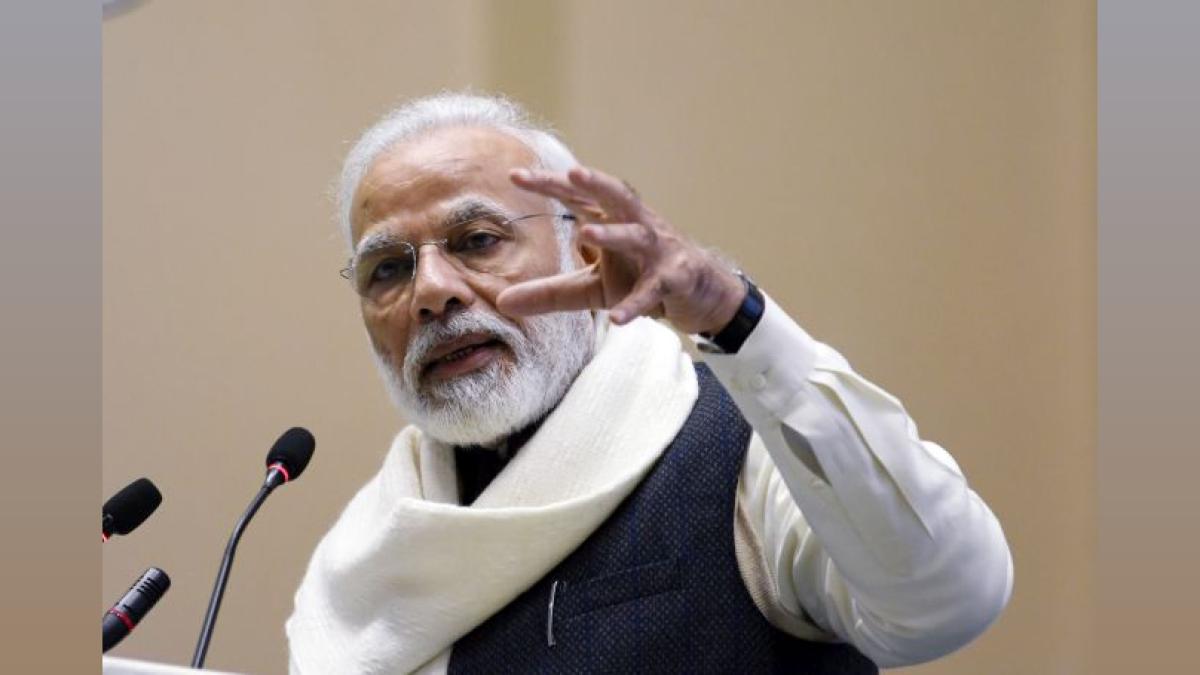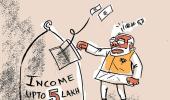Modi Govt. Reduced District Inequality More Than UPA II: EAC-PM
A new working paper by the Economic Advisory Council to the Prime Minister (EAC-PM) has found that inequality among districts declined more during the Modi-led NDA I government compared to the UPA II regime.

Photograph: R Raveendran / ANI Photo.
New Delhi, Feb 21 (PTI) Inequality among districts declined more sharply during the Narendra Modi-led National Democratic Alliance I government than the United Progressive Alliance II, a working paper by the Economic Advisory council to the Prime Minister (EAC-PM) has said.
The working paper titled 'Politics in Action: Economic Performance of Parliamentary Constituencies UPA (2) versus NDA (Modi Years)' claimed that mean growth rates of built-up surface across parliamentary constituencies were approximately 18 per cent higher during the NDA I when compared to the UPA II period.
Using publicly available high-resolution daytime satellite imagery of built-up surface, the paper compared the annualised growth of built-up surface across parliamentary constituencies in India during the UPA II regime and NDA I under Prime Minister Narendra Modi.
"Inequality among districts declined more sharply under Modi years -- as the least developed parts saw the highest growth -- compared to UPA II & UPA I regime," the working paper said.
"We found that the mean growth rates of built-up surface across parliamentary constituencies were approximately 18 per cent higher during the NDA (under Modi) when compared to UPA II," it added.
The working paper also said the growth rate is much higher in the least developed areas during the the NDA (Modi) regime than during UPA II.
It also said districts grew significantly faster on an average during the Modi years compared to both terms of the UPA from 2004 to 2014.
The working paper titled 'Politics in Action: Economic Performance of Parliamentary Constituencies UPA (2) versus NDA (Modi Years)' claimed that mean growth rates of built-up surface across parliamentary constituencies were approximately 18 per cent higher during the NDA I when compared to the UPA II period.
Using publicly available high-resolution daytime satellite imagery of built-up surface, the paper compared the annualised growth of built-up surface across parliamentary constituencies in India during the UPA II regime and NDA I under Prime Minister Narendra Modi.
"Inequality among districts declined more sharply under Modi years -- as the least developed parts saw the highest growth -- compared to UPA II & UPA I regime," the working paper said.
"We found that the mean growth rates of built-up surface across parliamentary constituencies were approximately 18 per cent higher during the NDA (under Modi) when compared to UPA II," it added.
The working paper also said the growth rate is much higher in the least developed areas during the the NDA (Modi) regime than during UPA II.
It also said districts grew significantly faster on an average during the Modi years compared to both terms of the UPA from 2004 to 2014.
You May Like To Read
TODAY'S MOST TRADED COMPANIES
- Company Name
- Price
- Volume
- Vodafone-Idea-L
- 11.65 (+ 3.56)
- 106772451
- Alstone-Textiles
- 0.28 ( -3.45)
- 44187760
- Mangalam-Industrial
- 0.88 ( -2.22)
- 39177573
- Sunshine-Capital
- 0.27 (+ 3.85)
- 35956340
- GMR-Airports
- 104.40 (+ 6.37)
- 30453005





